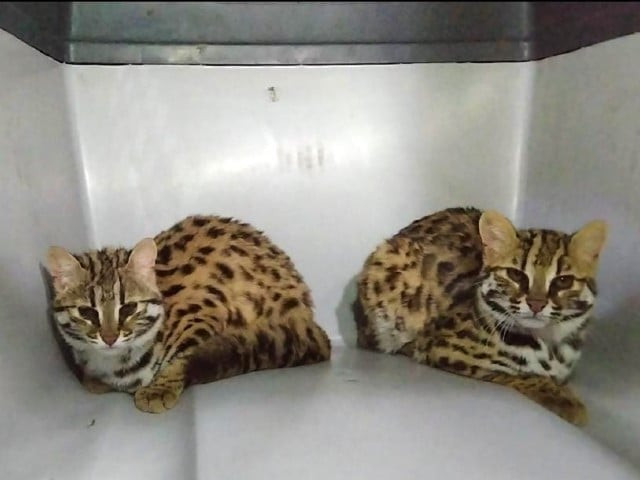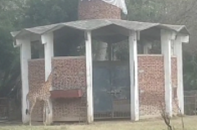MHNP ready to welcome leopard cats
Wildlife experts say Margalla Hills National Park ideal for survival of Asian leopards

The Margalla Hills National Park's (MHNP) ideal habitat is ready to welcome the relocation of new leopard cats from Karachi, with animal experts believing they would exceed the biome's Asian leopards in near future.
The leopard cats are currently the second-largest predators of the MHNP and due to their 92 per cent survival rate, ability to co-exist with common Asian leopards and the park's ideal environment is likely to become the largest predators in number.
The leopard cats, native to MHNP, are different from a leopard as the former is relatively smaller in size as compared to the common leopard, with a limited range or area to survive in the national park, said Islamabad Wildlife Management Board (IWMB) Manager Operations Sakhawat Ali during a briefing on the endangered cat species on Sunday.
The Sindh Wildlife Department recently rescued two male cubs of leopard cats and decided to shift them to the IWMB Rescue and Rehabilitation Centre established in the national park.
Sakhawat said that the leopard cats remained in quarantine for over seven days as per protocol and were released after the process. "A leopard and leopard cat share their territory due to communal feeding niche,” he explained. “A leopard feeds on larger animals, whereas the leopard cat feeds on household chickens, small rodents in the wilds and Kalij pheasants.”
Read Margalla Hills to have leopard reserve
The official recalled that earlier in 2019, the IWMB had released a leopard cat rescued from a poacher, while in 2018, the IWMB rangers had found a dead leopard cat, which was killed by AAA cartridge of a shotgun rifle.
“After that incident, a detailed study by the Pir Mehr Ali Shah (PMAS) Arid Agriculture University and the IWMB team was done to study the routes, feeding behaviour and movement of the cat in the national park that helped develop good resource data on its conservation," he added.
To a question, he said that the number of offspring of animal or bird species facing threats was relatively larger as compared to those having favourable breeding conditions. "Similar is the case with leopard cats, and no conflict is expected to occur between the leopards and leopard cats due to different volumes of prey,” assured Sakhawat.
He conjectured that the number of leopard cats was likely to be higher than the leopards as birth and survival rate was above 90 per cent among the former.
A study titled ‘Spatial Distribution and Dietary Niche Breadth of Leopard Cats (Prionailurus bengalensis) Inhabiting Margalla Hills National Park, Pakistan’, carried out by Department of Wildlife Management, PMAS Arid Agriculture University Rawalpindi student Hira Fatima along with her co-authors Tariq Mahmood, Lauren Mae Hennelly, Muhammad Farooq and Faraz Akram and Muhammad Sajid Nadeem investigated the leopard cat's habitat in detail.
"The leopard cat is distributed throughout the Himalayan foothills in Pakistan and occurs in moist temperate and dry coniferous forests,” reads an excerpt. “We recorded direct (field observations, camera trapping) and indirect signs (scats) of the species on 23 trails and tracks in the study area."
It added that the leopard cat was recorded at 13 different sampling sites in the park, with an altitudinal range between 664 to 1,441 metres.
Its diet comprises 10 wild and four domestic animal prey species, along with some plant matter that might have been consumed secondarily. Small mammals (five different species) are the main prey species of the leopard cat; the species has also been shown to eat Asian palm Squirrels, birds and insects.
Published in The Express Tribune, February 14th, 2022.


1675249047-0/image-(18)1675249047-0-208x130.webp)
















COMMENTS
Comments are moderated and generally will be posted if they are on-topic and not abusive.
For more information, please see our Comments FAQ